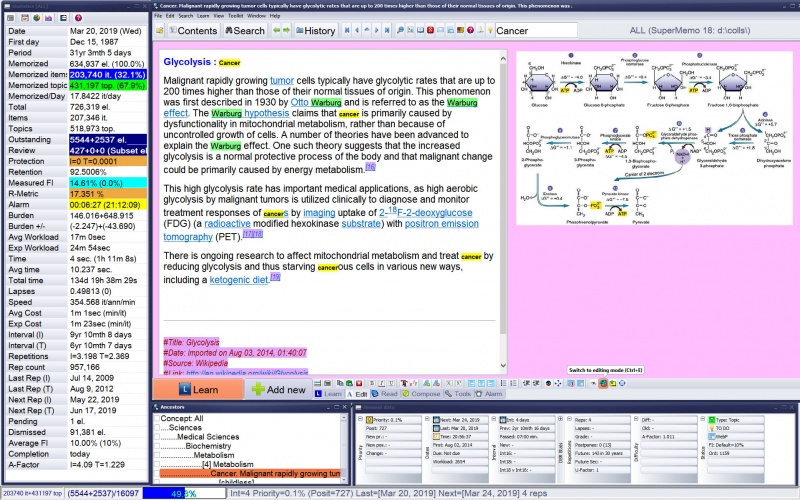File : Level menu makes it possible to adapt the functionality of SuperMemo to your proficiency level. Use lower levels in the beginning and move to higher levels as your knowledge of SuperMemo advances:
- Beginner - this is the default level that provides only the most essential operations for using the program, i.e. adding new material and learning it (see the picture below)
- Basic - the difficulty level that builds upon the Beginner level and introduces a stripped down learnbar with the most important options such as Remember extract, Remember cloze, etc. used in incremental reading. It also introduces functions for editing the knowledge tree: Add, Sibling, Insert, etc.
- Middle - this level introduces collection management functions (Delete collection, Merge collection, etc.), editing components, advanced search functions and browsing functions, Options, Mercy and layout management
- Professional- this level provides full functionality of SuperMemo for advanced users
The levels in SuperMemo can be changed by means of File : Level. Additionally the shortcut Ctrl+Alt+F12 can be used to circle between levels
If you would like to use SuperMemo in your own language, both Beginner and Basic levels provide simple interfaces that can entirely be localized by means of Tools : Options : Language : Localization table (see: International interfaces for SuperMemo).
Warrior layout on the File : Level menu applies the Classic layout known from older SuperMemos (with full statistics display), and sets SuperMemo on the Professional level.
Beginner level
Professional level
Figure: SuperMemo 17 on the Professional level (File : Level : Professional). The toolbar dock at the top displays the formatting toolbar. Collection statistics on the left. Element's ancestors at the bottom (middle) show the place of the article in the Biochemistry branch. Element's statistics at the bottom (right). Element window in the center of the screen with a topic on glycolysis in cancer (a result of a split executed on the Glycolysis article imported from Wikipedia). Note R-Metric of 16.6% which shows a huge advantage of Algorithm SM-17 over Algorithm SM-15 early in the day when processing short-interval, top-priority items. This helps keep forgetting index for top priority material below the average (4.8% rather than the average of 13.99%).

